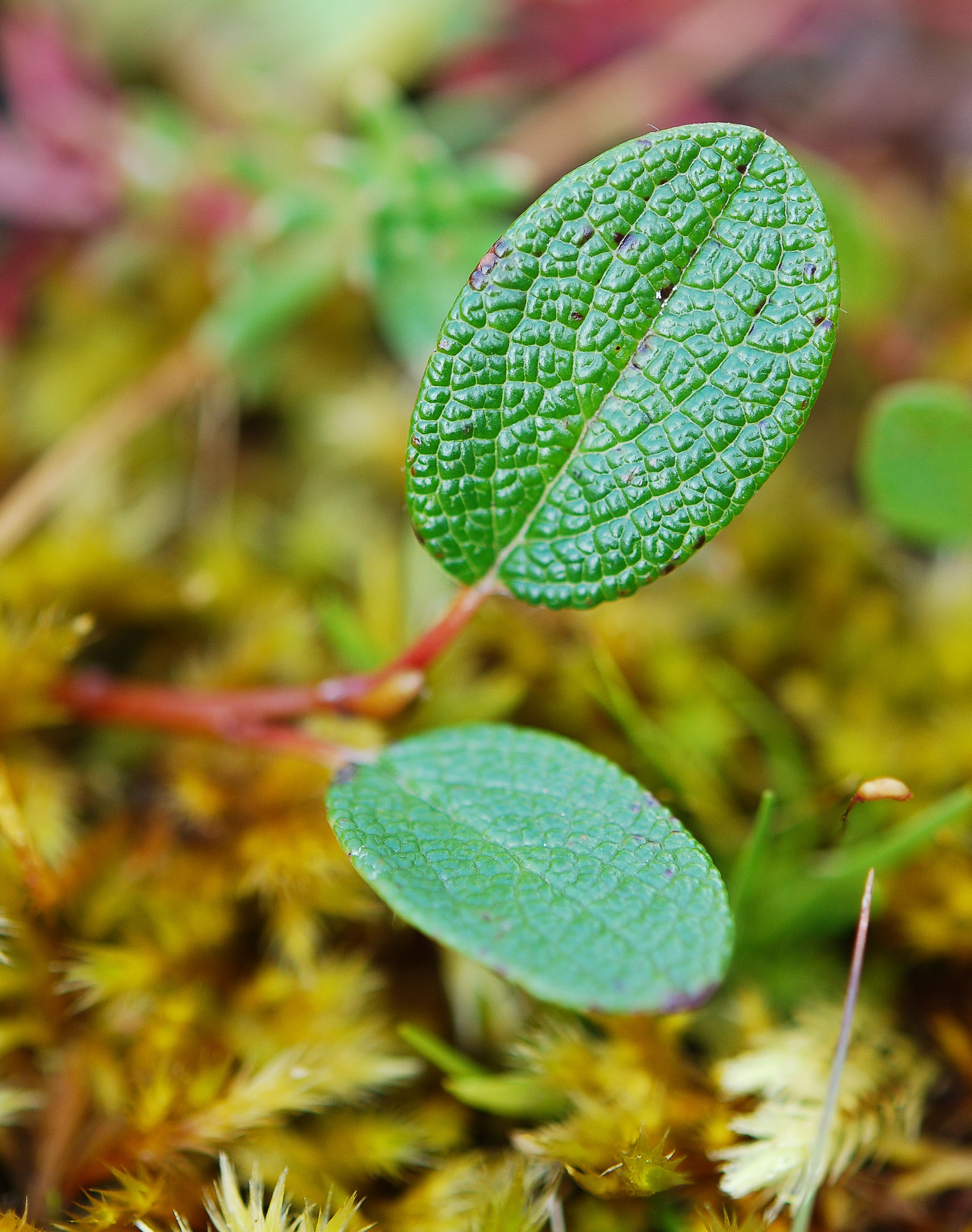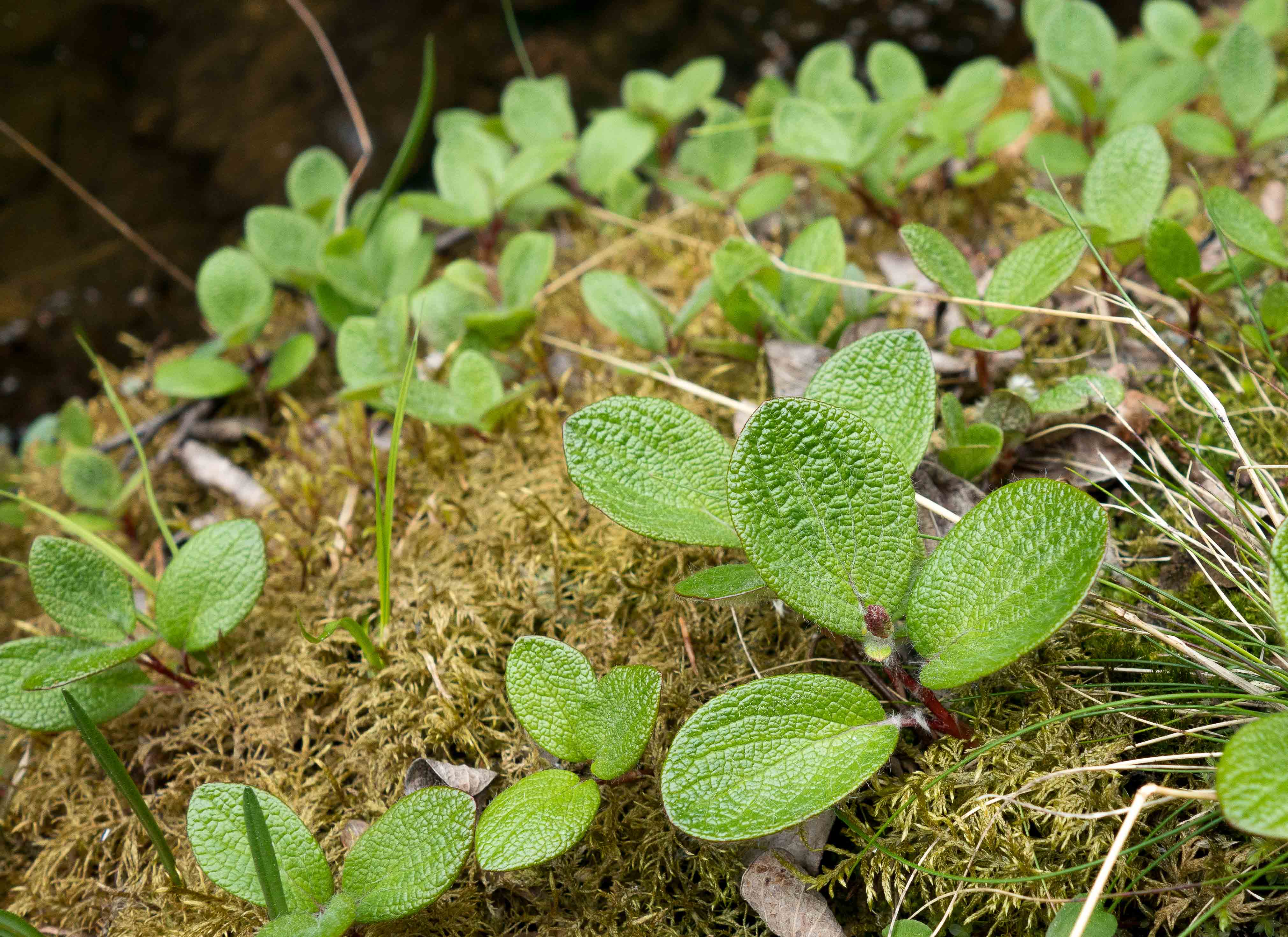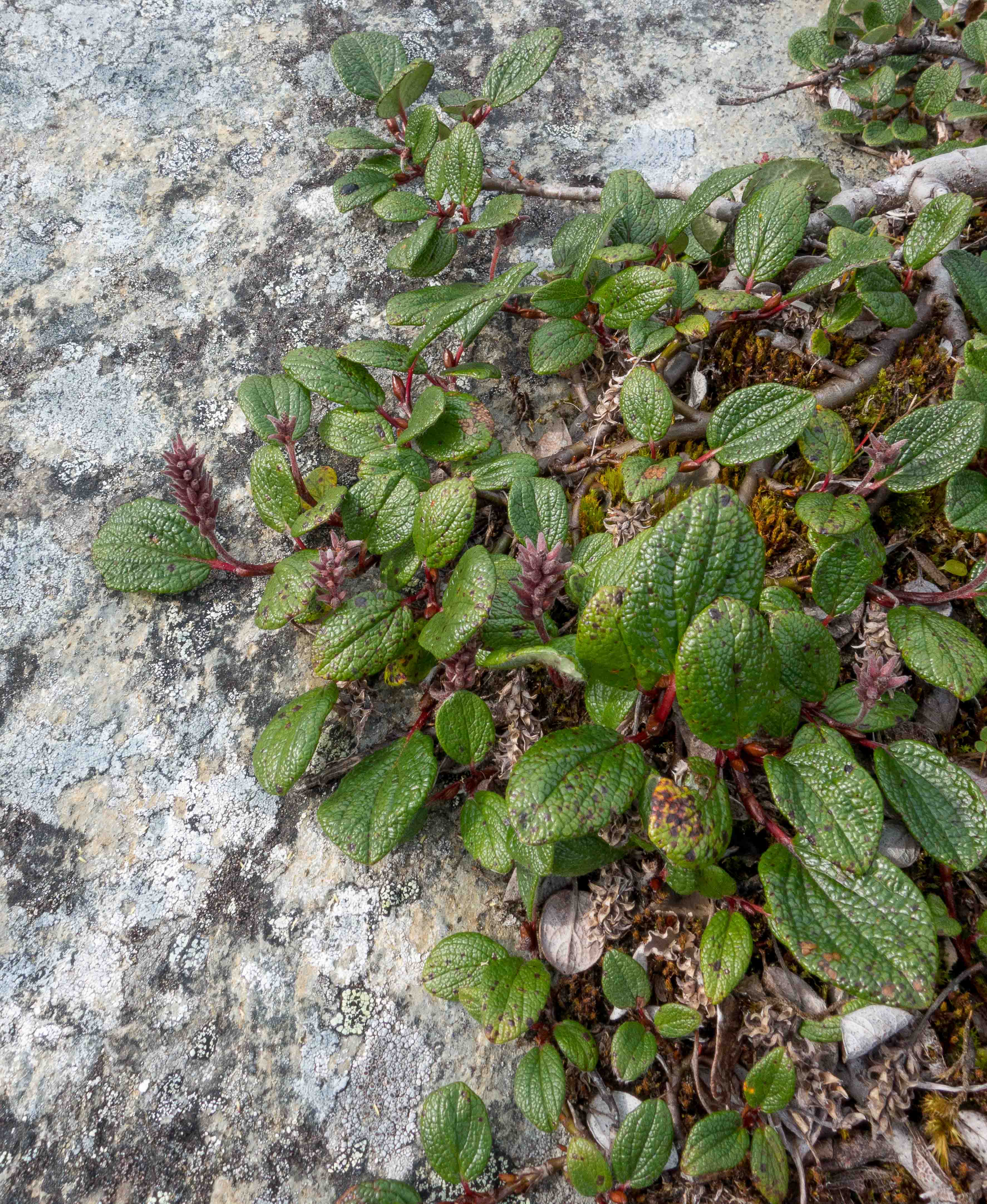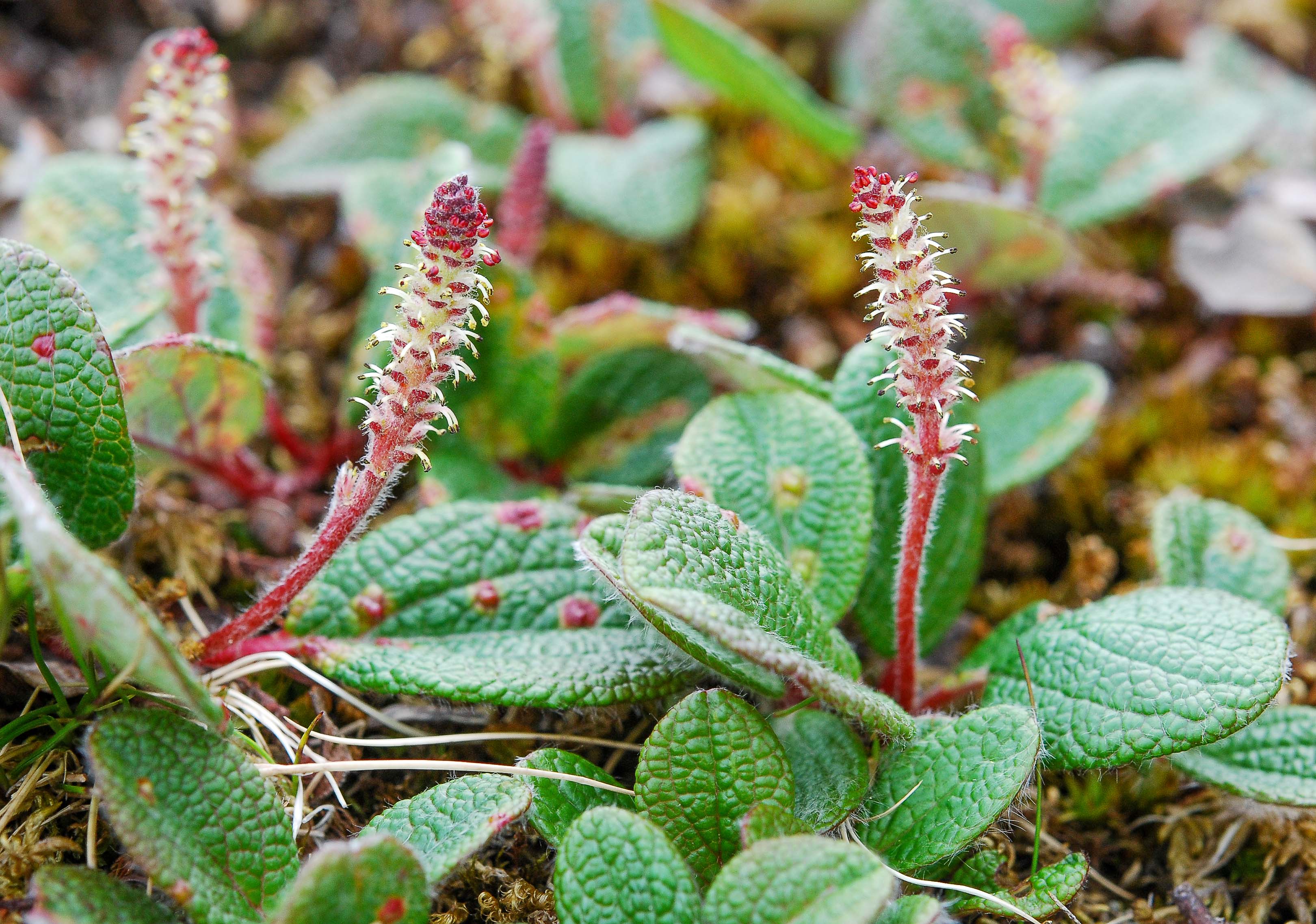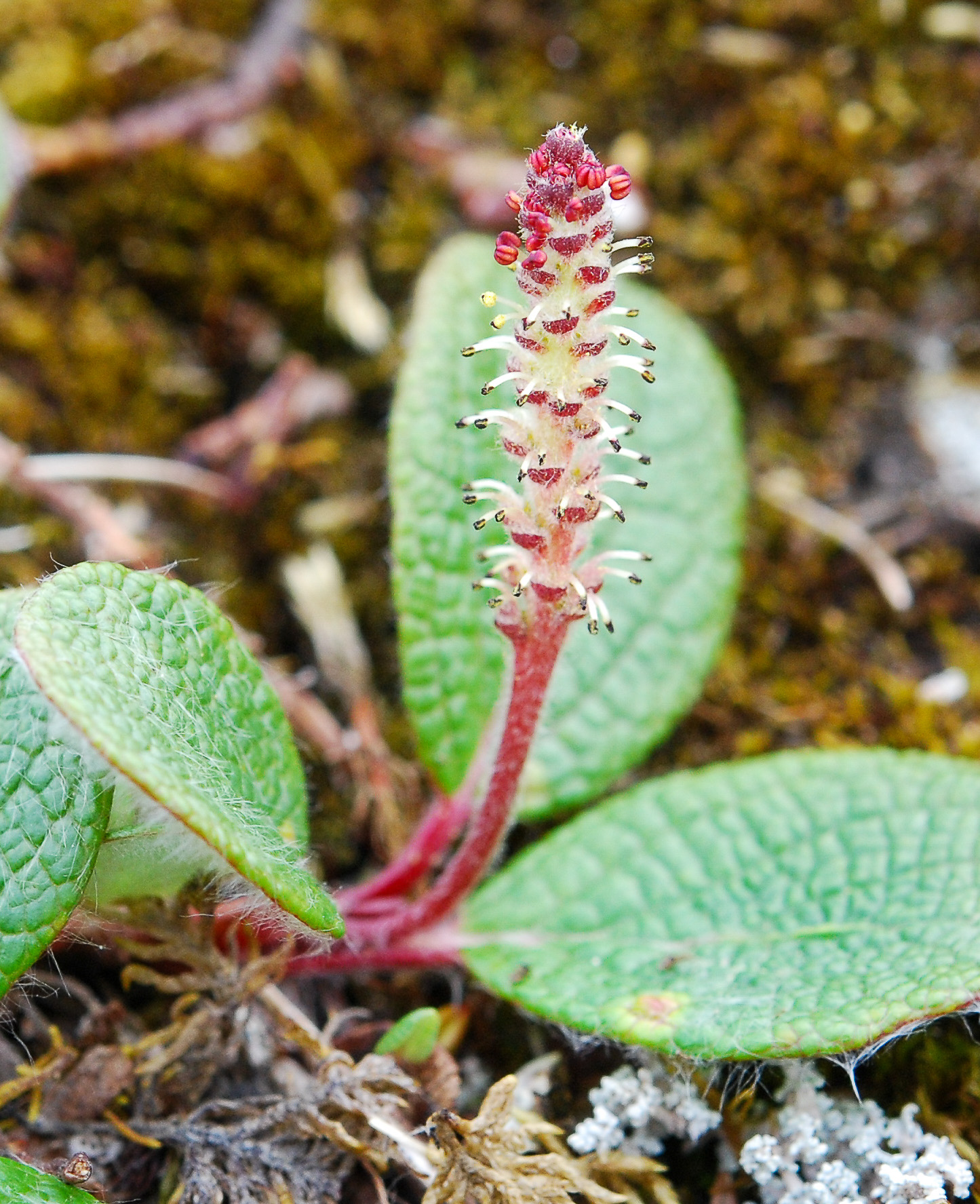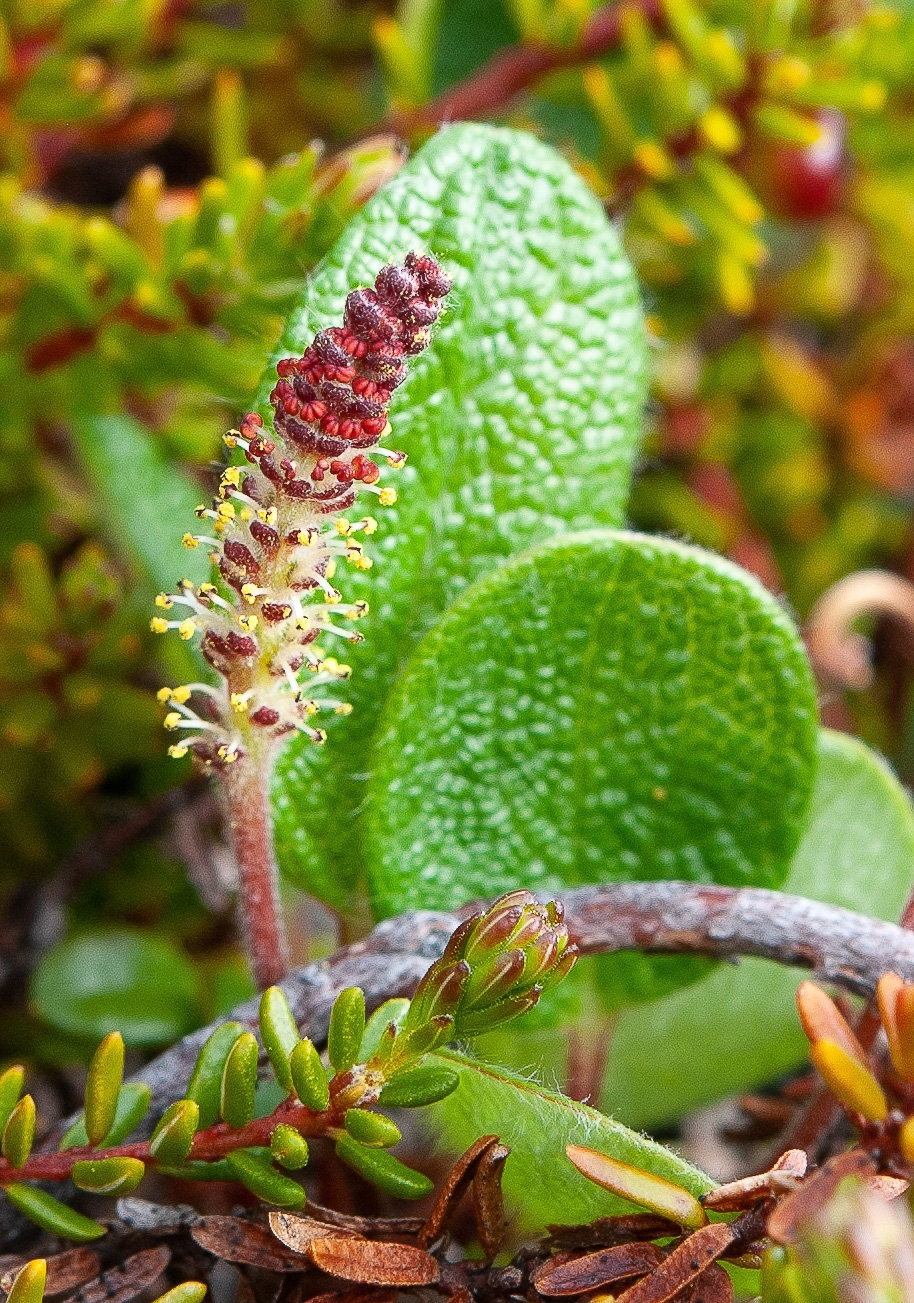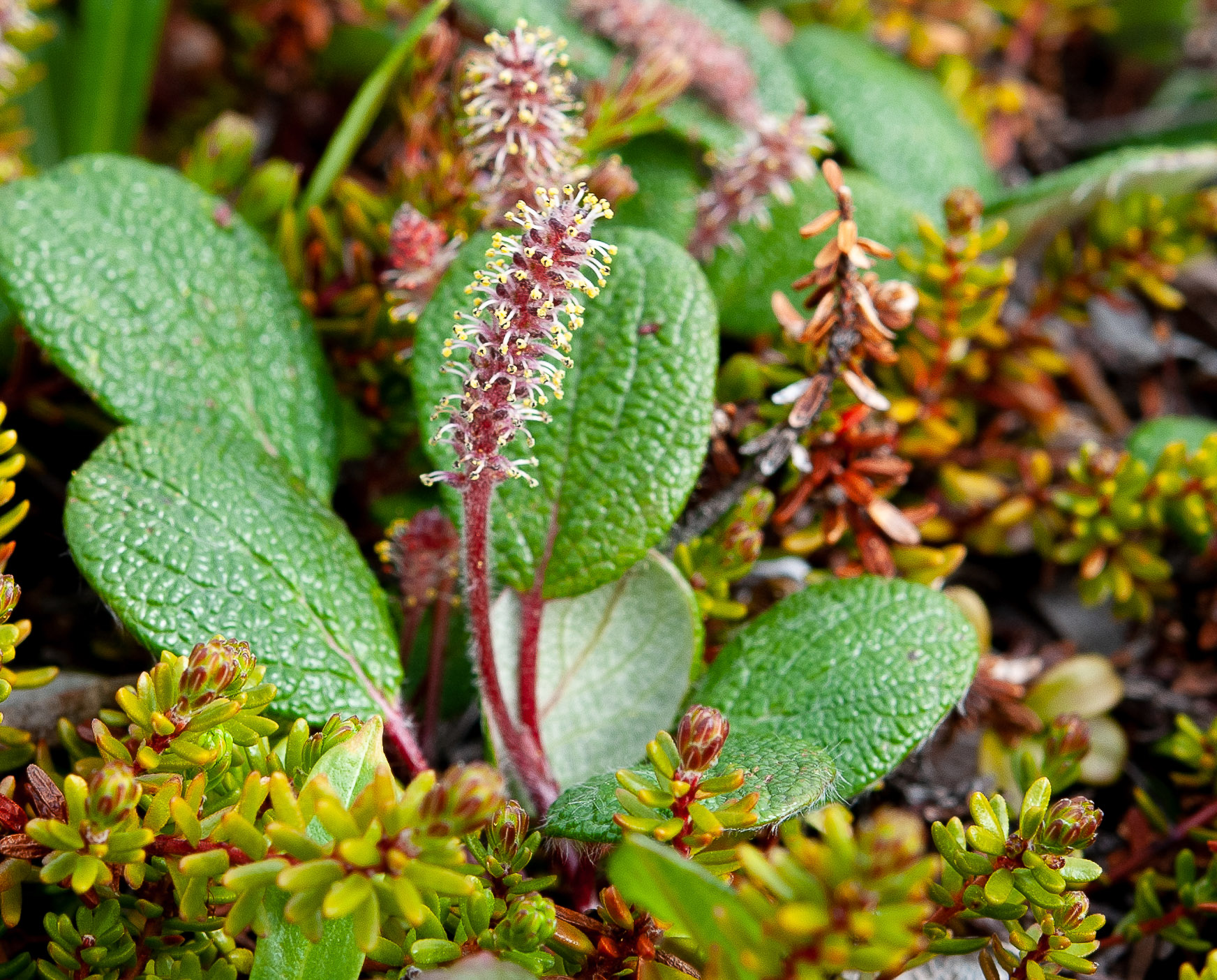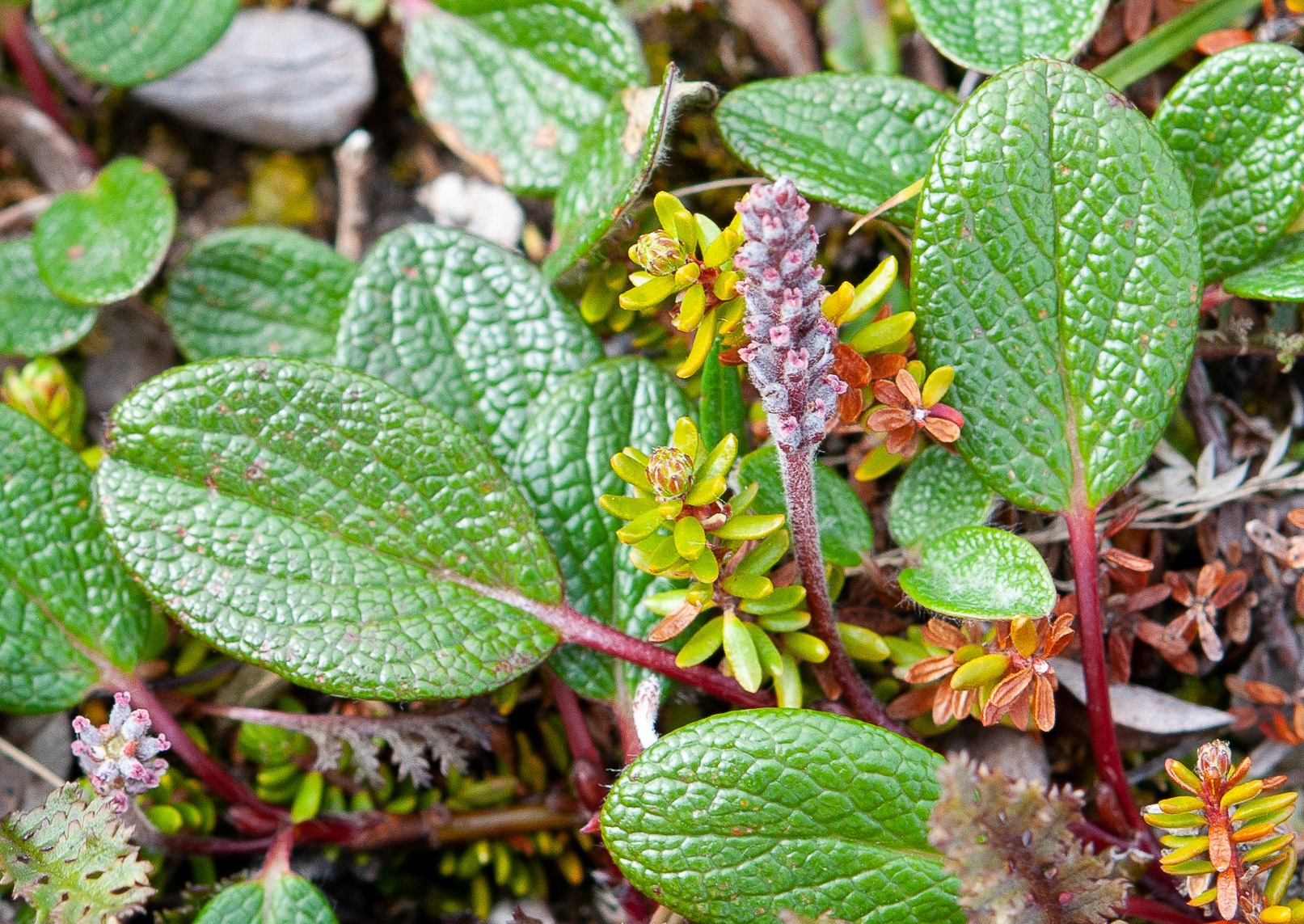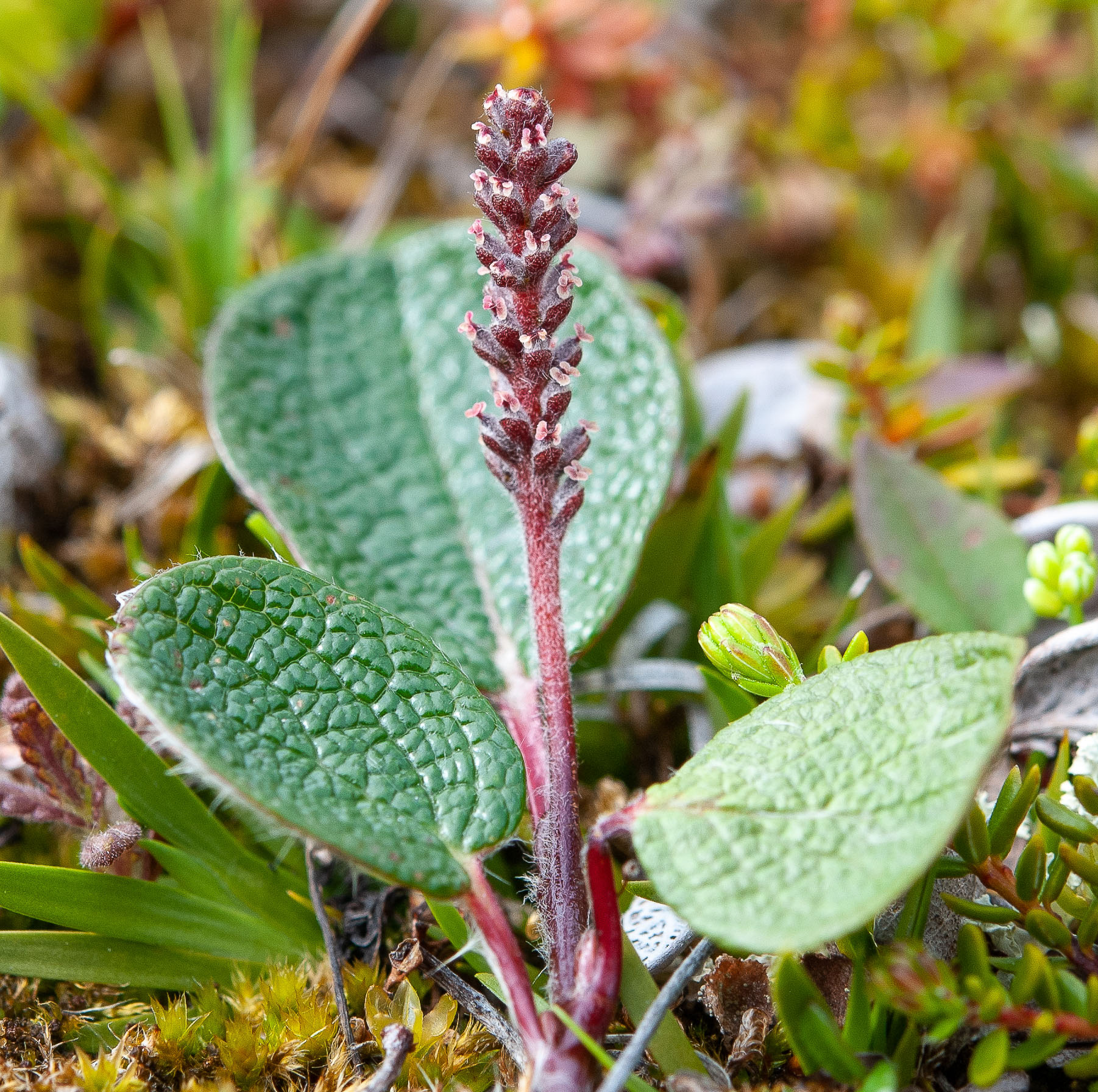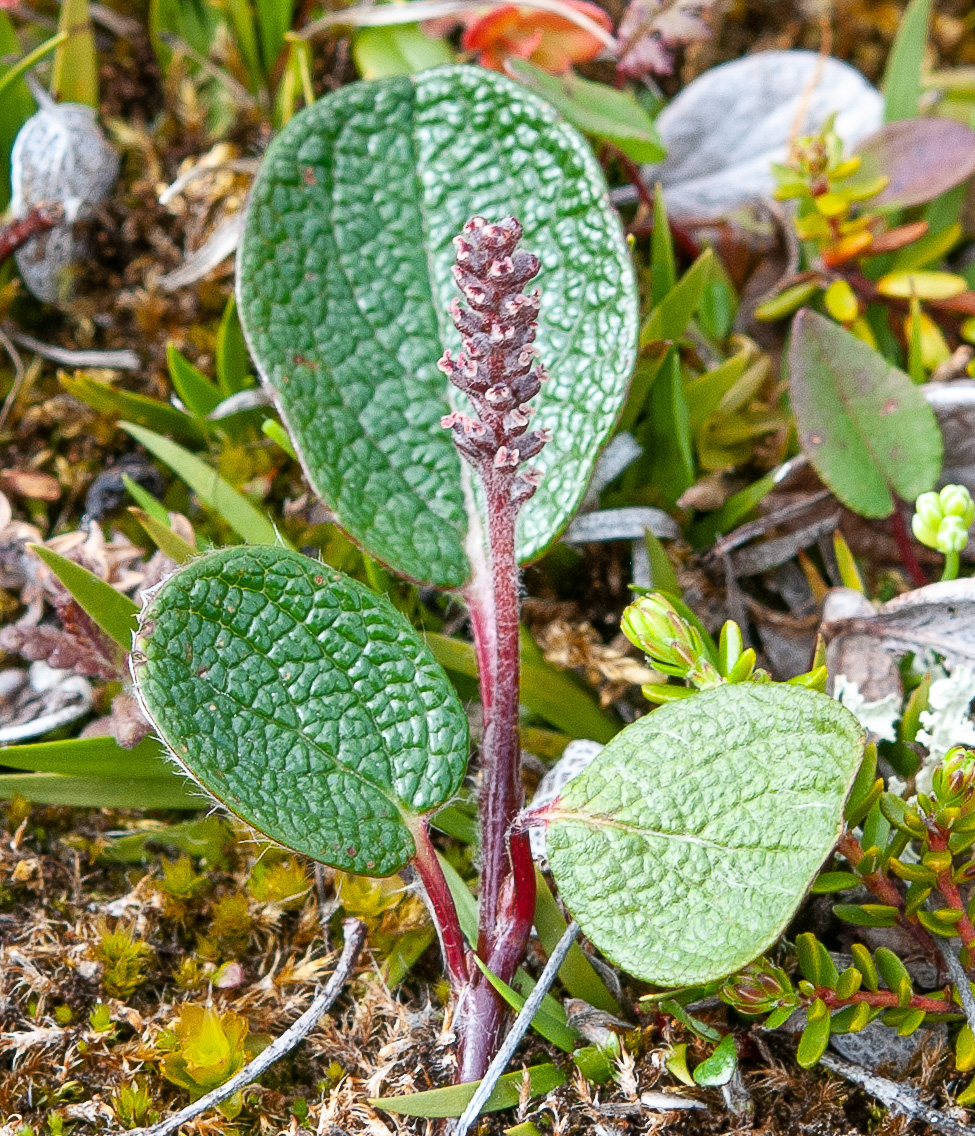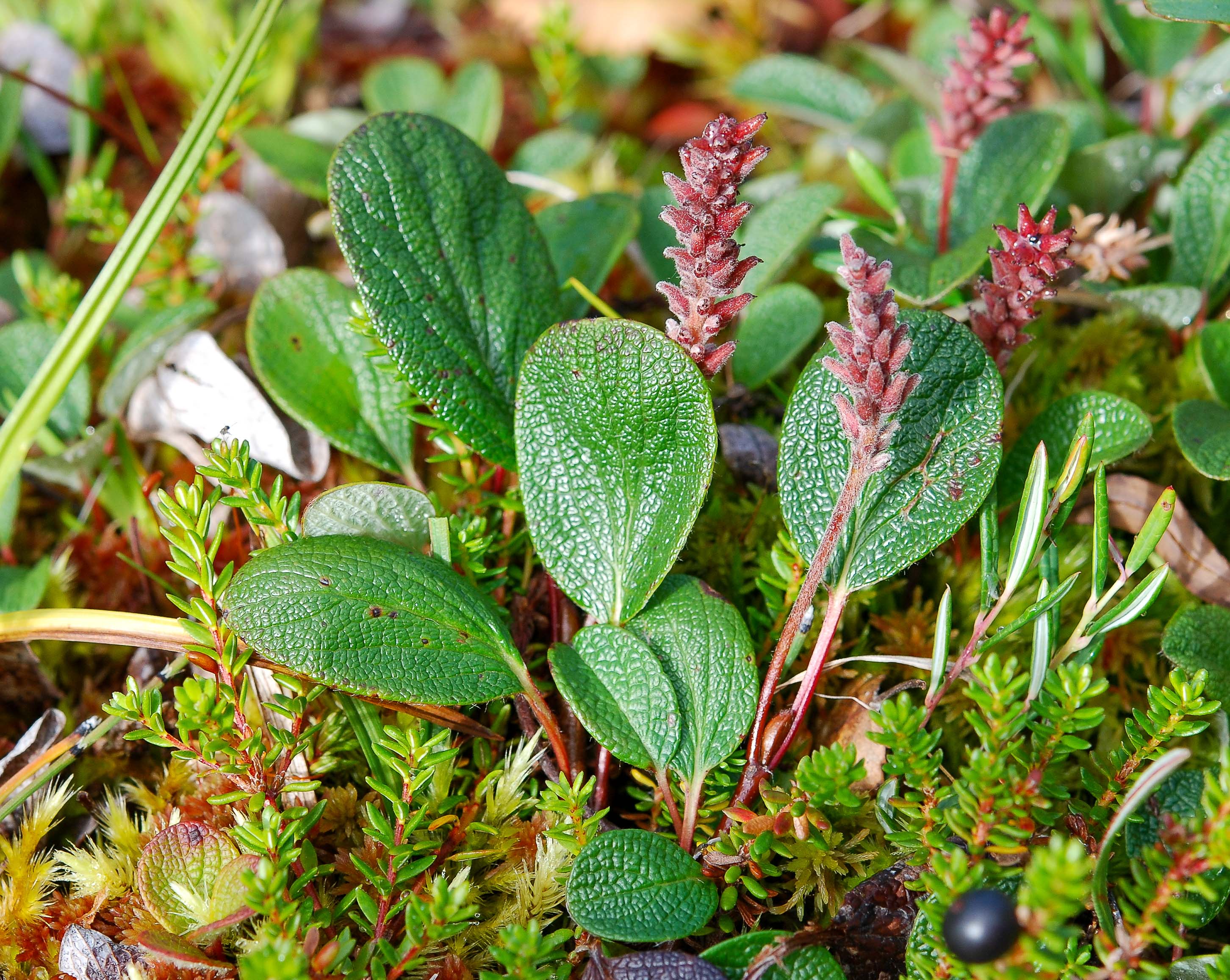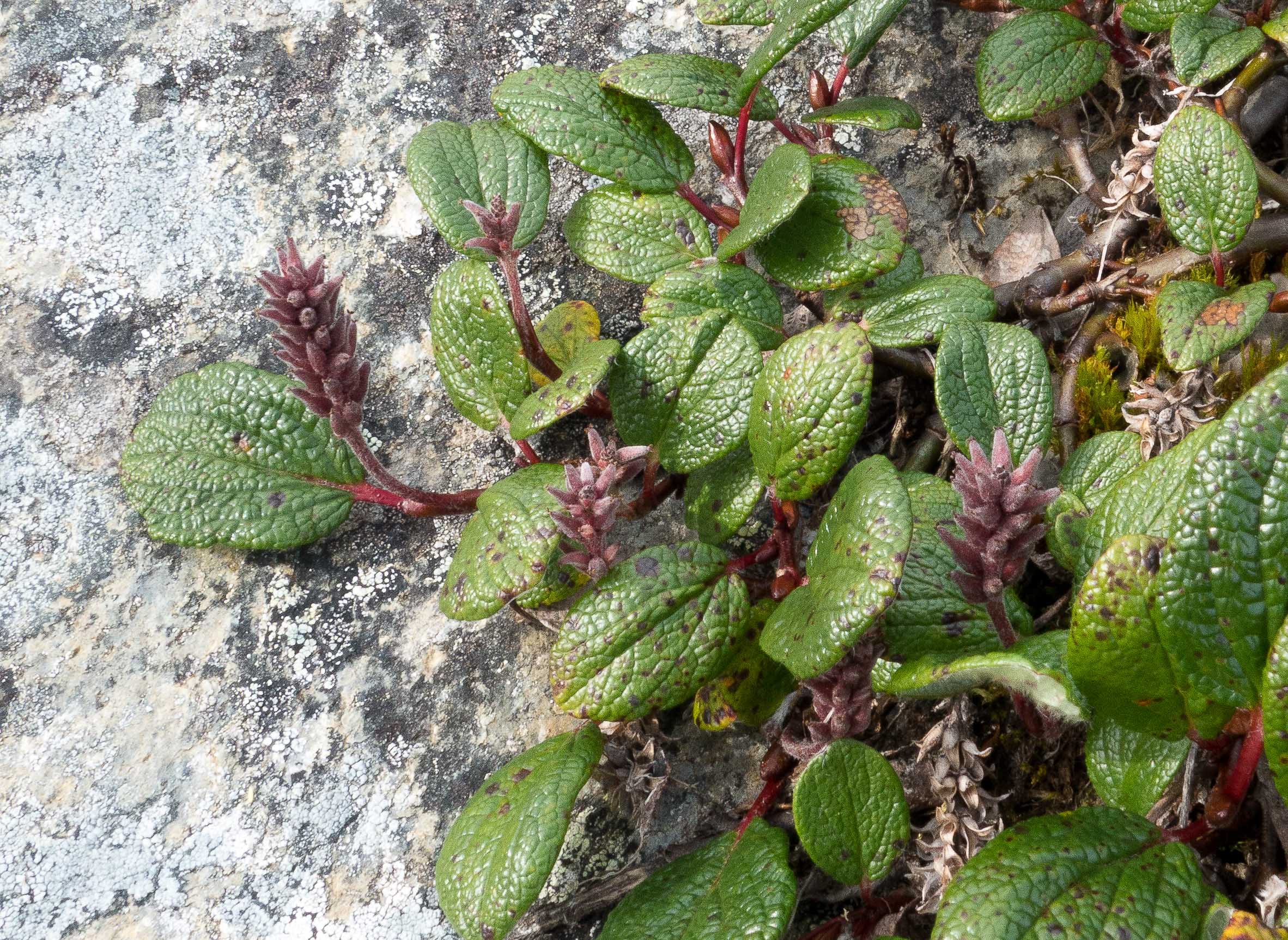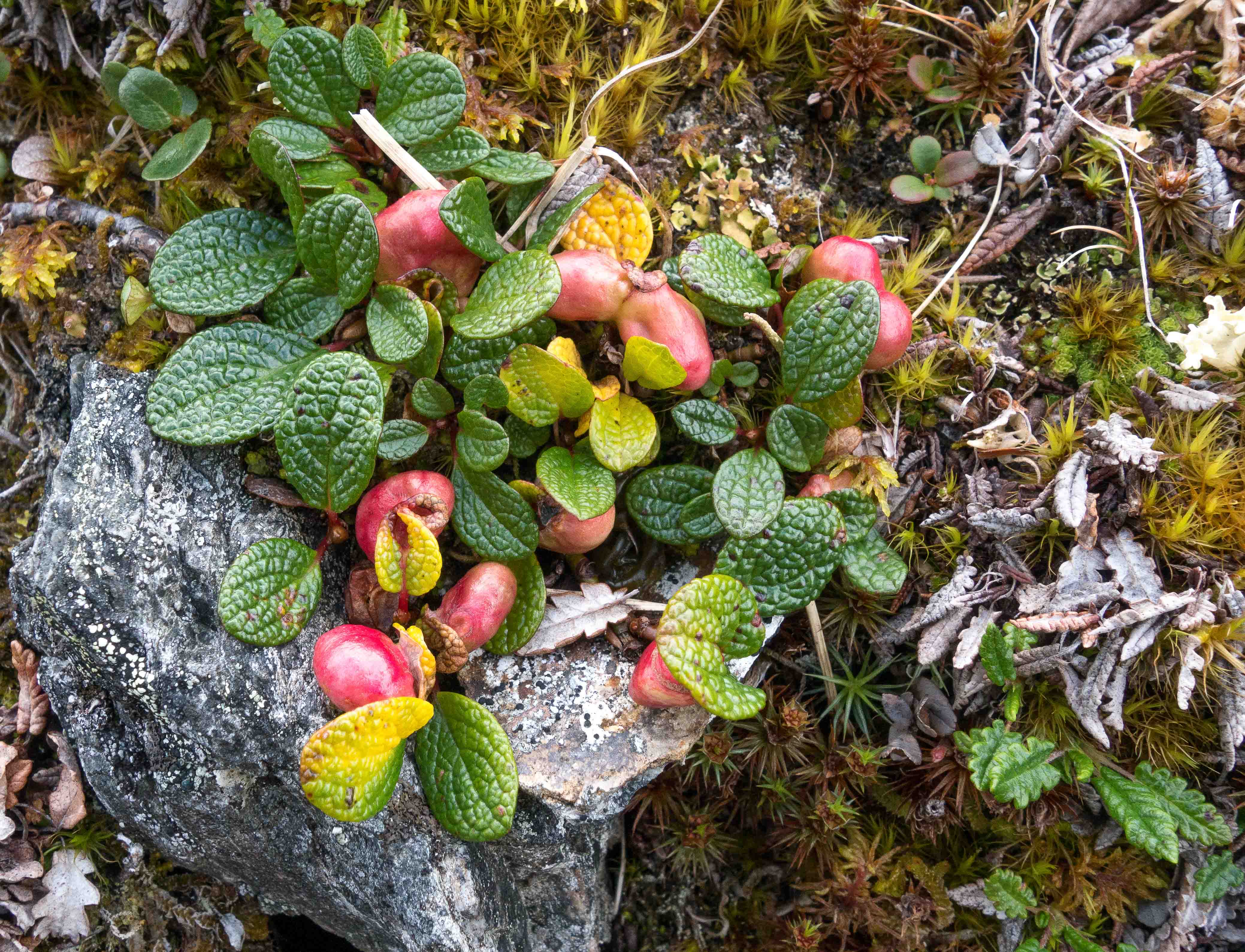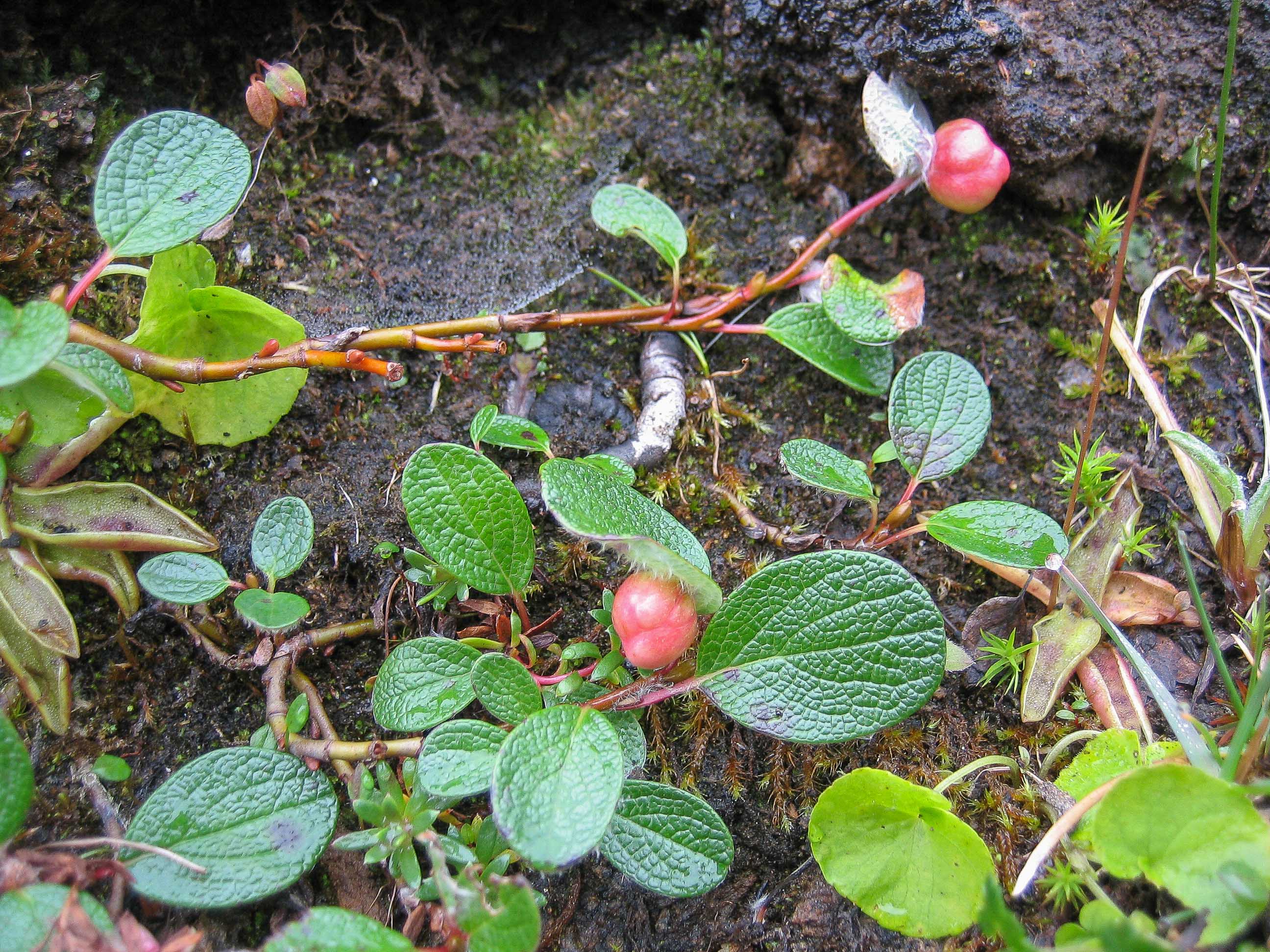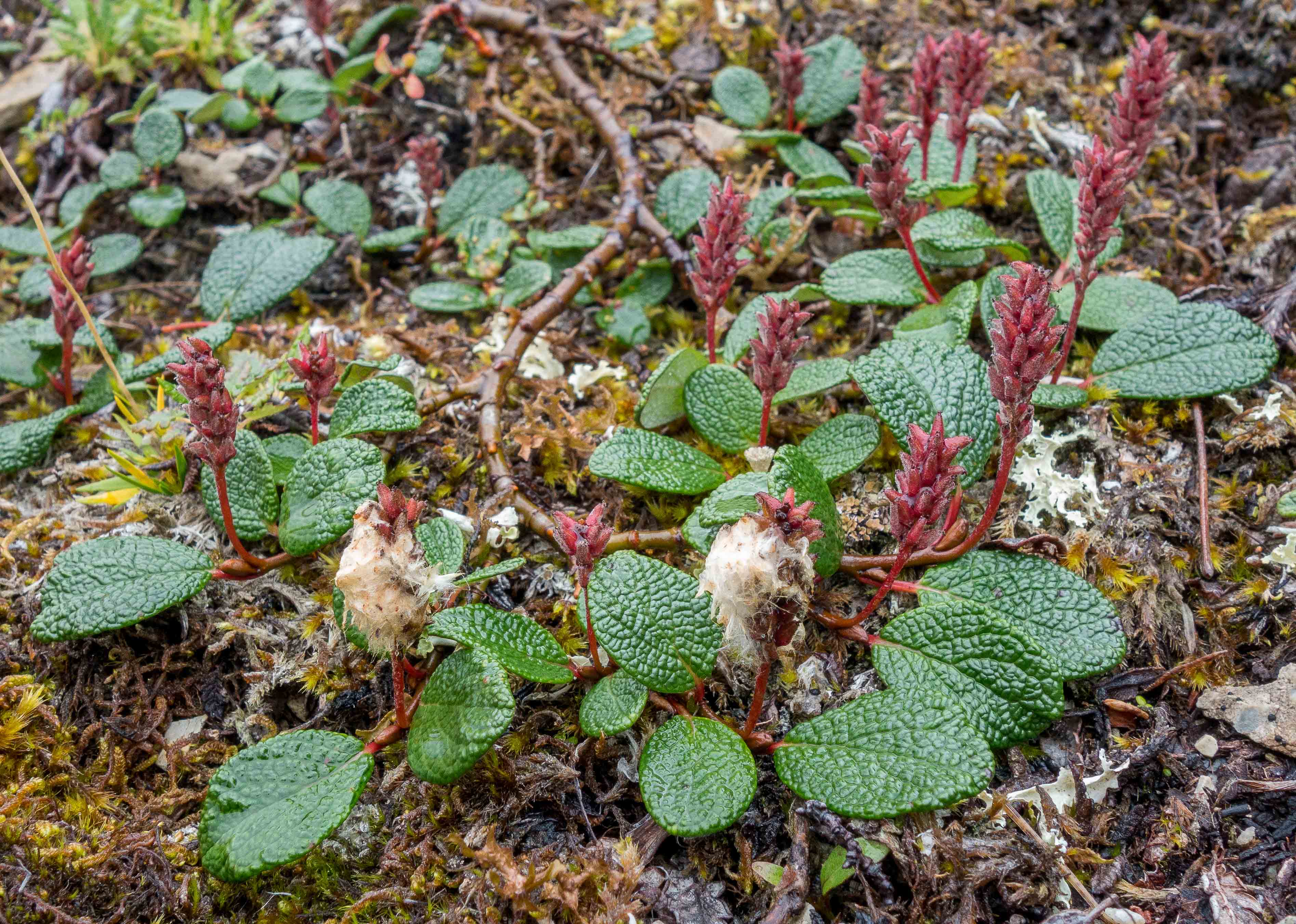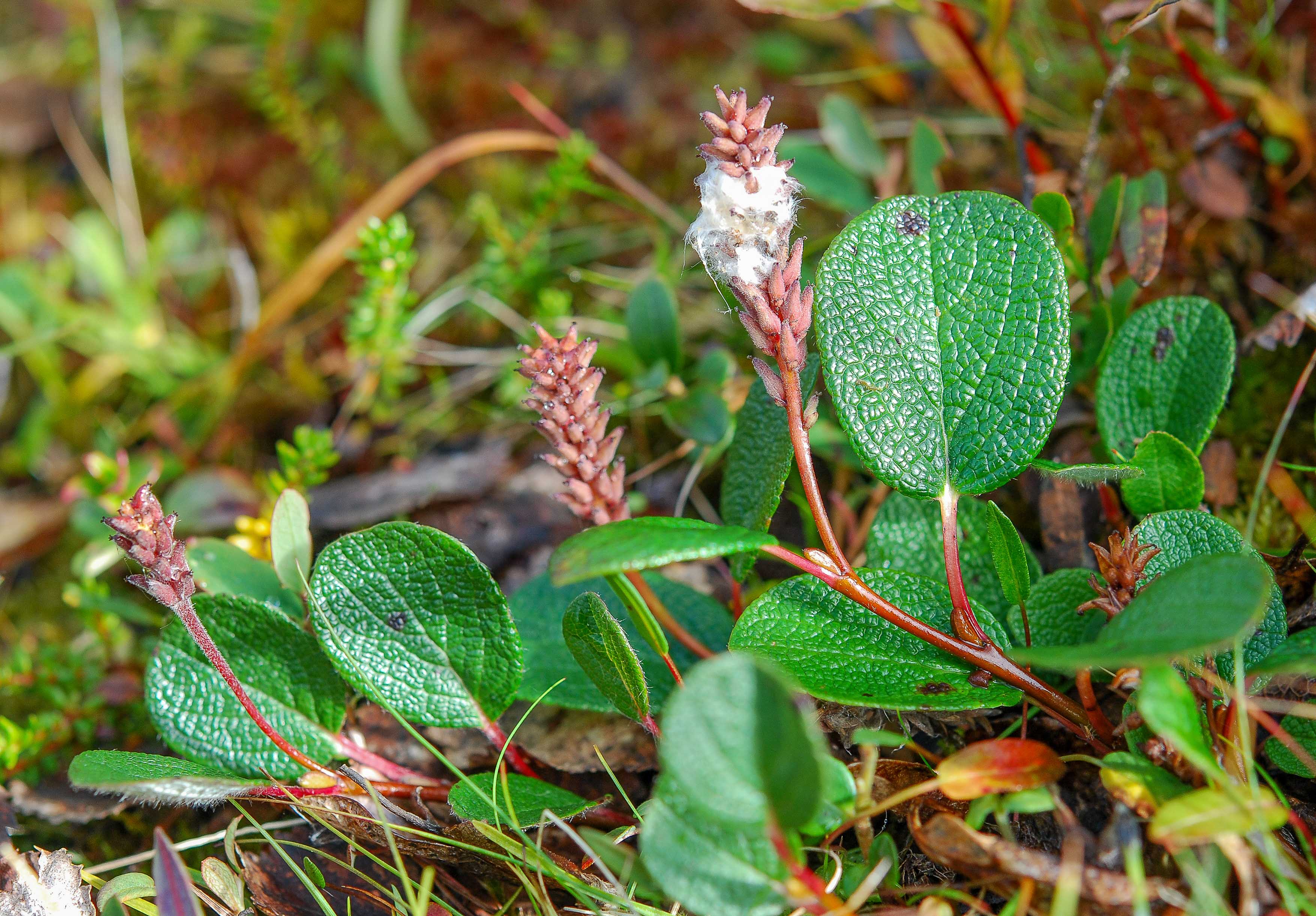Willows of Northern Europe
A guide to the identification and ecology of a northern keystone plant group

Salix reticulata L. is the largest of the three low, creeping tundra willows of northern Europe, but it nevertheless does not exceed five centimetres in height. The species is easy to recognize based in on its round, thick leaves, which have depressed veins forming a coarse network on the leaf blade. S. reticulata grows in treeless tundra habitats, but requires quite wet conditions and the presence of limestone in the ground. S. reticulata has a circumpolar distribution; in Fennoscandia, the species grows in northern Lapland and down south along the Norwegian fjell chain, but it also occurs in a few scattered postglacial relict populations in northeastern Finland. On the arctic northern coast of Norway, the species comes down to sea level.
Leaves and shoots
The thick, deeply corrugated round leaves of S. reticulata are very characteristic. Leaf veins are depressed on the upper surface and elevated on the lower surface. The leaves are dark green above and greenish-grey and often hairy below.
Shoots are long and thin, and creep on top of or just below the soil surface, and have small rounded buds and no stipules. Older branches of large individuals can be quite thick.
Male inflorescences
The elongated male inflorescences of S. reticulata are supported by long, red, hairy leafless stalks extending from the ground level. Anthers are initially red, but turn yellow as the pollen matures. Filaments subtending anthers are white or yellow, and bracts are red. Flowering occurs contemporaneously with leaf expansion.
Female inflorescences
The somewhat inconspicuous female inflorescences of S. reticulata grow from the tips of red hairy stalks. Ovaries and bracts are likewise red and hairy, and stigmas are pink. Flowering occurs after leaves have started expanding.
Catkins
Catkins of S. reticulata are dark red and hairy, and stand upward at the tips of long hairy stalks. Seed-bearing catkins are present long into the autumn.
Ecology
While S. reticulata is a high-arctic species, it is rather demanding in its habitat requirements and grows only on relatively moist, rich soils that receive nutrients from limestone cliffs (or from the sea on the northern Norwegian coast). The species can sometimes extend quite low down into forested fjell slopes along the sides of small creeks flowing down from nutrient-rich cliffs or bogs. Potential sites are often easy to find by searching for ripening fruits of Dryas octopetala (Rosaceae), which has similar environmental preferences but is easier to spot from a distance. S. reticulata is assumed to be partly wind-pollinated, but the insect pollinator community has been studied little. The specialist galling sawfly Euura (Eupontania) reticulatae induces large round galls on the undersides of S. reticulata leaves, and the species can be locally very common. Larvae of Egle flies and Pontopristia sawflies feed on seeds in maturing catkins (both can be found by searching for sharply delineated wadding on catkins). Otherwise, the herbivore community of S. reticulata is still poorly known.
